Chris Hedges's Blog, page 164
September 2, 2019
Hurricane Dorian Triggers Massive Flooding Across Bahamas
FREEPORT, Bahamas — Hurricane Dorian unleashed massive flooding across the Bahamas on Monday, pummeling the islands with so much wind and water that authorities urged people to find floatation devices and grab hammers to break out of their attics if necessary.
The fearsome Category 4 storm slowed almost to a standstill as it shredded roofs, hurled cars and forced even rescue crews to take shelter until the onslaught passed.
Officials said they received a “tremendous” number of calls from people in flooded homes. A radio station received more than 2,000 distress messages, including reports of a 5-month-old baby stranded on a roof and a grandmother with six grandchildren who cut a hole in a roof to escape rising floodwaters. Other reports involved a group of eight children and five adults stranded on a highway and two storm shelters that flooded.
Forecasters warned that Dorian could generate a storm surge as high as 23 feet (7 meters).
Police Chief Samuel Butler urged people to remain calm and share their GPS coordinates, but he said rescue crews had to wait until weather conditions improved.
“We simply cannot get to you,” he told Bahamas radio station ZNS.
On nearby Abaco Island, Parliament member Darren Henfield said he received reports of deaths but officials had not been able to confirm them.
Meanwhile in the United States, the National Hurricane Center extended watches and warnings across the Florida and Georgia coasts. Forecasters expected Dorian to stay off shore, but meteorologist Daniel Brown cautioned that “only a small deviation” could draw the storm’s dangerous core toward land.
By 2 p.m. EDT Monday, the storm’s top sustained winds fell slightly to 150 mph (240 kph). It was crawling along Grand Bahama Island at just 1 mph (2 kph).
The water reached roofs and the tops of palm trees. One woman filmed water lapping at the stairs of her home’s second floor.
In Freeport, Dave Mackey recorded video showing water and floating debris surging around his house as the wind shrieked outside.
“Our house is 15 feet up, and right now where that water is is about 8 feet. So we’re pretty concerned right now because we’re not at high tide,” said Mackey, who shared the video with The Associated Press. “Our garage door has already come off. … Once we come out of it with our lives, we’re happy.”
On Sunday, Dorian churned over Abaco Island with battering winds and surf and heavy flooding.
Henfield described the damage as “catastrophic” and said officials did not have information on what happened on nearby cays. “We are in search-and-recovery mode. … Continue to pray for us.”
A spokesman for Bahamas Power and Light told ZNS that there was a blackout in New Providence, the archipelago’s most populous island. He said the company’s office in Abaco island was flattened.
“The reports out of Abaco as everyone knows,” spokesman Quincy Parker said, pausing for a deep sigh, “were not good.”
Most people went to shelters as the storm neared. Tourist hotels shut down, and residents boarded up their homes. Many people were expected to be left homeless.
On Sunday, Dorian’s maximum sustained winds reached 185 mph (297 kph), with gusts up to 220 mph (354 kph), tying the record for the most powerful Atlantic hurricane ever to make landfall. That equaled the Labor Day hurricane of 1935, before storms were named. The only recorded storm that was more powerful was Hurricane Allen in 1980, with 190 mph (305 kph) winds, though it did not make landfall at that strength.
The Bahamas archipelago is no stranger to hurricanes. Homes are required to have metal reinforcements for roof beams to withstand winds into the upper limits of a Category 4 hurricane, and compliance is generally tight for those who can afford it. Risks are higher in poorer neighborhoods that have wooden homes in low-lying areas.
Dorian was likely to begin pulling away from the Bahamas early Tuesday and curving to the northeast parallel to the southeastern coast of the U.S. The system is expected to spin 40 to 50 miles (64 to 80 kilometers) off Florida, with hurricane-force wind speeds extending about 35 miles (56 kilometers) to the west.
An advisory from the hurricane center warned that Florida’s east-central coast could see a brief tornado sometime Monday afternoon or evening.
South Carolina Gov. Henry McMaster issued an order Sunday for the mandatory evacuation of his state’s entire coast. The order, which covers about 830,000 people, was to take effect at noon Monday, at which point state troopers were to make all lanes on major coastal highways one-way heading inland.
“We can’t make everybody happy, but we believe we can keep everyone alive,” McMaster said.
A few hours later, Georgia’s governor, Brian Kemp, ordered mandatory evacuations for that state’s Atlantic coast, also starting at midday Monday.
Authorities in Florida ordered mandatory evacuations in some vulnerable coastal areas. North Carolina Gov. Roy Cooper warned his state that it could see heavy rain, winds and floods later in the week.
A hurricane watch was in effect for Florida’s East Coast from Deerfield Beach north to Altamaha Sound in Georgia. A storm surge watch was extended northward along the Georgia coast to the Savannah River. Lake Okeechobee was under a tropical storm watch.
Weekend traffic was light in Florida despite the many evacuation orders, unlike during the chaotic run-up to Hurricane Irma in 2017, when the unusually broad storm menaced the entire state.
___
Coto reported from San Juan, Puerto Rico. Associated Press writers Tim Aylen in McLean’s Town Cay, Seth Borenstein in Washington and Michael Weissenstein in Havana contributed to this report.

Yet Another Trump Tax Scam Has Been Exposed
Urban policy experts along with progressive groups and politicians responded with outrage to a New York Times report published Saturday that detailed how the Trump administration’s “signature plan” to help low-income communities across the United States with a multibillion-dollar tax break has “fueled a wave of developments financed by and built for the wealthiest Americans.”
The tax break was part of the legislation critics dubbed the GOP tax scam, which Republicans forced through Congress and President Donald Trump signed into law in December of 2017. Linking to the new report, the progressive advocacy organization MoveOn tweeted, “Like everything else about the GOP’s 2017 tax scam, a program supposedly meant to benefit poor communities is just another handout to the rich.”
According to the Times:
Among the early beneficiaries of the tax incentive are billionaire financiers like Leon Cooperman and business magnates like Sidney Kohl—and Mr. Trump’s family members and advisers.
Former Gov. Chris Christie of New Jersey; Richard LeFrak, a New York real estate titan who is close to the president; Anthony Scaramucci, a former White House aide who recently had a falling out with Mr. Trump; and the family of Jared Kushner, Mr. Trump’s son-in-law and senior adviser, all are looking to profit from what is shaping up to be a once-in-a-generation bonanza for elite investors.
The purpose of the program, as the Times explained, “was to coax investors to pump cash into poor neighborhoods” by allowing them “to sell stocks or other investments and delay capital gains taxes for years—as long as they plow the proceeds into projects in federally certified opportunity zones.”
However, instead of low-income communities reaping the benefits of such investments, “billions of untaxed investment profits are beginning to pour into high-end apartment buildings and hotels, storage facilities that employ only a handful of workers, and student housing in bustling college towns, among other projects,” the Times reported.
Though the report sparked immediate criticism of the program, Yonah Freemark, a doctoral candidate in MIT’s Department of Urban Studies and Planning, noted on Twitter that “we always knew that this was going to happen—it’s how the bill was written.”
Trump’s “opportunity zone” tax break—supposedly meant to improve low-income neighborhoods—has actually resulted in luxury development in wealthy communities. But we always knew that this was going to happen—it’s how the bill was written. https://t.co/c4Zr0RfiGA
— Yonah Freemark (@yfreemark) August 31, 2019
Among those who highlighted the report were 2020 Democratic presidential primary candidates Bill de Blasio, mayor of New York City, and Sen. Bernie Sanders (I-Vt.).
“President Trump has many critics,” tweeted Sanders. “But as a con artist, he is a talent of the highest caliber.”
Even the part of Trump’s tax scam supposedly for low-income neighborhoods is a massive tax avoidance scheme for the ultra-rich.
President Trump has many critics. But as a con artist, he is a talent of the highest caliber. https://t.co/lIc2IBk2Zj
— Bernie Sanders (@SenSanders) September 1, 2019

American Workers Have Little to Celebrate This Labor Day
This piece originally appeared on Informed Comment.
On Labor Day, American workers have little to celebrate. That’s alright. The September Labor Day, while initially proposed by some workers in the 1880s, was backed by conservative President Grover Cleveland over May 1, which he associated with radicalism (i.e. with workers who would demand their rights). So it really isn’t for the workers, it is for the bosses.
Related Articles

The Only 2020 Democrats Who Actually Want to Empower Workers
by
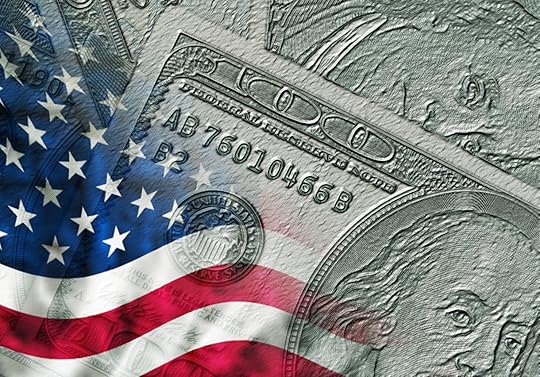
Both Democrats and Republicans Profit From Fueling Climate Change
by

Bernie Sanders' Green New Deal Is the Hail Mary Our Planet Needs
by Juan Cole
David Harrison at the Wall Street Journal reports that the lower 50% of US households by wealth have 32% less wealth than in 2003 in real numbers.
They have only now, in 2009, finally regained the wealth they lost in the Great Bush near-Depression of 2007-2009.
So they’ve gotten back to what they had in the way of assets (home value and other valuables; probably not stocks, since that half of Americans doesn’t typically own securities) in 2007, but not what they had in 2003.
There are 129 million households in the United States, so this means about 64.5 million households are one-third worse off with regard to asset ownership than when Bush went to war in Iraq. (Is there a connection?)
In contrast, the top 1% of households, 1.29 million of them, have twice as many assets as they did in 2003.
Harrison says that the rate of increase in inequality in wealth holdings is even greater than that in income.
Speaking of income, the average wage of the average worker in real terms has been static for decades. Americans after WWII were used to getting better off each year. Those who aren’t wealthy haven’t, since about 1970.
The poor got significantly poorer in the past two decades, and the rich got significantly richer. This broad social trend helps to explain our politics, in which workers suffer from frequent wage theft (a technique Trump perfected), from wages on which most people can’t actually live, and from downward mobility.
The other part of our politics is our plutocracy, in which a small number of billionaires runs the society for their own profit and benefit. Campaign finance laws have been gutted by the Republicans on the Supreme Court, so that a nonentity like Trump could use his ill-gotten gains to more or less just buy the election, along with his dark-money backers. Trump repaid the backers by cutting taxes massively on the top 1%, creating a $1 trillion a year Federal budget deficit. Since the government supplies services to people, and it can no longer afford to provide the same level of service, this “tax cut” is actually a tax on workers.
Last year I anticipated the WSJ story in some ways with a column surveying similar findings. I pointed out that joining the Democratic Socialists of America and a labor union were among the remedies for our bad case of plutocratitis.

The Only 2020 Democrats Who Actually Want to Empower Workers
This Labor Day, Democratic presidential candidates will no doubt be touting their support for a $15 per hour minimum wage. None have opposed the idea.
A minimum wage increase would put more money in workers’ pockets. But so far, only two candidates — Senators Elizabeth Warren and Bernie Sanders — have far-reaching proposals to give workers something even more important: more power.
Related Articles

Beyond the 2020 Electoral Circus, a Workers Rebellion Is Brewing
by Paul Street

Bernie Sanders Declares It's Time for Workers to Win the Class War
by

Who Exactly Is the Economy 'Booming' For?
by
Both senators, for example, support the idea of requiring big corporations to give workers a seat in their boardrooms.
Warren’s Accountable Capitalism Act would guarantee workers the right to elect 40 percent of their firm’s board of directors. Warren hopes this will help companies break with the “shareholder-first” model that has resulted in a fixation on short-term profits.
In Europe, such “codetermination” policies are widely prevalent, providing unions a strong voice in corporate decision-making. In Germany, for instance, workers choose a significant proportion of company board members — and in certain industries, worker representatives exercise equivalent control to shareholders.
In addition to his Workplace Democracy Plan, which among other things would allow workers to organize throughout entire industries (and not just at their individual workplaces), Sanders is also reportedly developing a proposal to give workers a direct ownership stake in their companies.
This idea also has European roots.
In the UK, for example, the Labour Party program for Inclusive Ownership Funds would gradually shift up to 10 percent of large firms’ stock ownership into worker funds. Workers would receive dividends of up to around $600 per year, with any excess revenue going national welfare programs.
This UK plan can be traced back to a similar, but bolder, proposal in 1970s Sweden.
At that time, Swedish trade unions had agreed to keep wages down as part of an anti-inflation pact with employers and the government. But trade union economist Rudolf Meidner saw how corporations were accumulating excess profits in the arrangement and vowed to do something about it.
Under the “Meidner Plan,” Swedish workers would’ve continued to go without inflation-creating pay raises, but their economic power would’ve increased through the transfer of corporate voting share into new employee investment funds. After just a few decades of operation, Meidner envisioned these funds securing majority control over the Swedish stock market.
The plan sparked a massive corporate backlash. Even ABBA opposed it! (Band members not only topped the global pop charts — they also happened to own several companies.) The country’s center-left Social Democratic Party eventually rejected it, too.
Still, Meidner’s vision remains inspiring. Here in the United States, looking at how executives and wealthy shareholders have pocketed the lion’s share of Republican tax cut windfalls, it’s clearer than ever that we need transformative change if workers are to get their fair share of the fruits of their labor.
A Next System Project poll found that a majority of Americans already support a policy resembling the proposed UK Inclusive Ownership Funds.
Economists have long grappled with how to couple traditional tax and wage policy with the broader question of building worker power. In the 2020 election, both Sanders and Warren have proven serious about confronting the latter challenge — though a few things still separate them.
Sanders deserves special praise for explicitly naming the “working class” movement he hopes to build. Recent reports revealed that Warren’s campaign, by contrast, repeatedly crossed a Culinary Union picket line in Las Vegas, which shows that we must hold “pro-worker” candidates accountable too.
This Labor Day, it’s time this country had a real conversation about building power for the working class.

September 1, 2019
Problem Officers Under Scrutiny in Criminal Justice Crusade
BOSTON—During the 22 years he spent in prison after being convicted of killing a Boston police detective, Sean Ellis believed there was something suspicious about the officers who led the murder investigation. He just couldn’t prove it.
It would take years of digging and scores of public information requests from his attorneys to uncover evidence that several officers investigating the 1993 murder case were involved in criminal activity — information that wasn’t shared with the defense.
A Superior Court judge in 2015 ordered a new trial for Ellis and his murder charges were later dismissed.
Related Articles
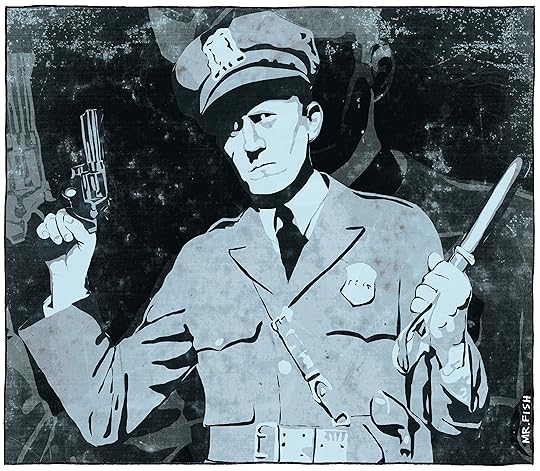
Our Ever-Deadlier Police State
by Chris Hedges

Bigoted Cops Show True Colors in Online Hate Groups
by
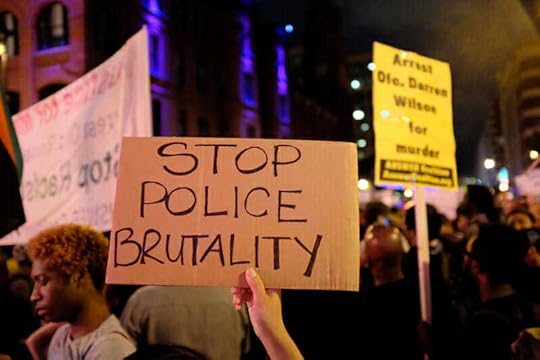
The Stomach-Turning Numbers Behind America's Police Violence
by
Defense attorneys have long run up against a brick wall when trying to discover whether an officer has credibility issues that could set their client free.
But the case of Ellis and more recently, Philadelphia rapper Meek Mill, born Robert Williams, is fueling calls among civil liberty groups and reform-minded district attorneys to make the system more transparent. It is part of a larger call to address criminal justice reform at a time of growing anger over police shootings and wrongful convictions often involving African-Americans.
Five years after protests that erupted in Ferguson, Missouri, over the fatal shooting of unarmed teenager Michael Brown, activists have been pushing prosecutors to create lists of problem police officers, limit the use of the officers on them and review cases these officers worked to determine whether cases should be dropped or if defendants should be exonerated.
“In addition to charges, this is the other thing that prosecutors can be doing — making it very hard for officers to engage in the kind of conduct that should lead to them being fired,” said Scott Roberts, the senior director of criminal justice campaigns for Color of Change, an online racial justice organization, which is calling for prosecutors nationwide to create lists.
The Supreme Court ruled that prosecutors have a constitutional responsibility to share information favorable to the defense, including law enforcement officers with credibility issues. It is often called the Brady rule.
Wrongdoings that can land an officer on a so-called Brady list or database include lying on a police report, excessive force, bigoted comments or crimes such as drunken driving or domestic violence. Some lists also include officers under investigation, though they could be removed if the allegation is dismissed. Others have expanded the list to include lab technicians and others who might testify on the government’s behalf.
With no clear guidance from the courts on how that information should be shared, critics have chided prosecutors for failing to keep track of problem officers and going out of their way to keep information from the defense — either by failing to disclose the details about the officer, choosing not to put the officer on the stand or dropping a case altogether. Criminal justice advocates said the Brady rule violations have long been a problem and continue to pose a risk to innocent defendants.
“It’s a serious issue,” said Samuel Gross, the founder and senior editor of National Registry of Exonerations which has tracked 2,472 exonerations, mostly due to Brady violations. “We know from repeated scandals that there are a substantial number of officers who have engaged in concerted patterns of abuse and done dreadful things.”
In July, a Pennsylvania appeals court overturned Mill’s decade-old conviction on a drug and gun case over questions about the arresting officer’s credibility. Mill pleaded guilty this week to a misdemeanor gun charge in a deal that ends the legal limbo surrounding the 2007 arrest.
Several district attorneys have made these lists or databases central to their agendas while lawsuits in several states call for the list to be public.
In Philadelphia, District Attorney Larry Krasner, who was a defense attorney for 25 years, said he didn’t know a list existed when he took office. Krasner said there was no effort in the past to share the list of names — filed away under the name Damaged Goods — with defense attorneys. Krasner took over a list with less than 100 officers and created a larger database in which automatic notifications go out when a case involves a problem officer. The list could be expanded to include officers accused of making racist and violent social media posts.
Krasner doesn’t think anyone in the data base should be on the force, but he’s only limited to controlling their participation in cases.
“It is a position of public trust and people who are on that force may be called as witnesses in criminal matters,” he said. “It simply doesn’t make sense for the public to fund people who are incapable of doing the work.”
St. Louis Circuit Attorney Kimberly Gardner formalized an “exclusion list” with 58 names including nearly two dozen officers found to have written racists social media posts. Her office has also dismissed about 100 cases involving officers with credibility issues and ruled officers on the list may not be allowed to testify at trials or submit a case to her office.
“People want fairness and justice for all,” Gardner said. “No one wants to pick and choose when an officer decides to be credible. What is at stake is the whole criminal justice system.”
Harris County District Attorney Kim Ogg, which covers Houston, has formalized a system for its disclosure database that now includes 1,593 names going back to the 1980s — and allows a judge to decide if disclosure is necessary. Ogg’s office has dismissed 27 cases and is reviewing 1,400 other convictions after credibility issues emerged regarding one of the officers in a deadly drug raid. Prosecutors say the probe has grown to 14,000 cases.
“Every witnesses’ bias and credibility can be tested and police officers are no exception,” she said. “The idea is that the law is applied equally to everyone.”
Police unions have responded to the lists with lawsuits and lobbying to prevent the release of the names or limit their use by prosecutors.
“It’s unfair and improper to arbitrarily add officers to this list without some fair and balanced protocol,” John McNesby, president of the Philadelphia police union, said in a statement. “It’s damaging to officers’ reputations and livelihood.”
Many state laws prevent the data from being made public because it involves officers’ personal information. Some databases also include unredacted criminal investigative material that is not subject to public information laws. Lawsuits demanding the list be made public have been filed in New York and New Hampshire.
“Defendants have no idea whether prosecutors are making disclosure they need. Defendants have no idea whether police chiefs are sending the right names over to prosecutors,” said Gilles Bissonnette, the state legal director for the American Civil Liberties Union.
Harris County and St. Louis have refused to release the names as does Philadelphia.
But advocates for publicizing the police data have scored several legal victories of late.
A court in Philadelphia ordered Krasner last year to turn over the names from the previous list to an association of public defenders. And in New Hampshire, the ACLU and several media outlets successfully sued the state to have the list of 260 officers released. The state’s attorney general’s office has appealed the ruling to the New Hampshire Supreme Court.
The California Supreme Court this week ruled that a suspect’s right to a fair trial outweighs the privacy rights of officers who might have a history of bad behavior. Justices rejected a lower court ruling that barred the Los Angeles County Sheriff’s Department from giving prosecutors the names of deputies accused of improper conduct.
For Ellis, the debate over these lists comes too late.
Suffolk County prosecutors didn’t keep a list of officers’ names when Ellis was convicted in the killing of detective John Mulligan. It was created in 2013.
Ellis said he believes he wouldn’t have gone on trial if his defense team had known about the officers, several of whom pleaded guilty to federal conspiracy, civil rights and tax violations. Judge Carol Ball concluded that Ellis’ arrest was a rush to judgment based on an inadequate police investigation.
“I knew that this wasn’t right because I knew I didn’t do what I was accused of,” said Ellis, 45, who was sentenced to life after two mistrials.
He might have gone to college or been able to attend his father’s funeral. He would’ve been with his mother as she battled cancer. Instead, he was denied a request to go to his dad’s funeral.
He now lives with his mom and sister in Massachusetts and works as an administrative assistant earning $15 per hour.
“It’s like I lost my life,” Ellis said. “I went in as a teenager and here I am getting out as a 41 year old. I don’t believe what happened to me happens in a vacuum. I believe it’s common place. It’s the way the system works.”
___
Associated Press writer Jake Bleiberg contributed to this report from Dallas.

The Deadly Mistake Corporate Media Keep Repeating
Rich and poor countries see the challenge of the growing crisis quite differently: for the wealthy it revolves around climate denial, while for those in poverty it’s a matter of life and death.
In the developing world, climate news is presented by the media as an international problem. In the rich world newspapers, broadcasters and websites tend to see it as a political issue, according to researchers at the University of Kansas.
Related Articles
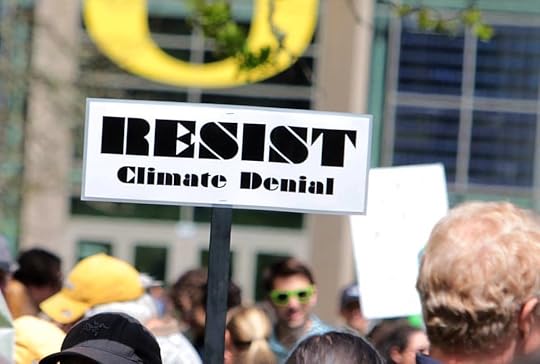
U.S. Has the Most Climate-Change Deniers of Any Rich Country: Survey
by Natasha Hakimi Zapata

Saying Goodbye to Planet Earth
by Chris Hedges

Scientists Definitively Debunk the Biggest Climate Change Lie
by
And in the richest country of all, climate news is presented as a contentious issue. That is, according to a massive study by Californian scientists, the people who say climate change is not happening, or not a problem, get 49% more coverage than the scientists who have the evidence that it represents a serious and accelerating crisis.
Even in the mainstream outlets, distinguished climate scientists tend to get no more visibility than those – often not scientists – who challenge their conclusions.
Journalism is based on fairness: a willingness to listen carefully to competing arguments. In the newspaper trade, this is called balance. But according to three researchers who worked through 200,000 research papers and 100,000 digital and print media articles, the balance is false.
Propaganda campaign
“It’s not just false balance; the numbers show that the media are ‘balancing’ experts − who represent the overwhelming majority of scientists − with the views of a relative handful of non-experts,” said Anthony LeRoy Westerling of the University of California, Merced.
“Most of the contrarians are not scientists, and the ones who are have very thin credentials. They are not in the same league with top scientists. They aren’t even in the league of the average career scientist.”
He and two colleagues report in the journal Nature Communications that they identified 386 prominent climate contrarians – mostly English-speaking academics, scientists, politicians and business people – and 386 distinguished climate scientists.
They then identified the 100 most prominent of each group in the 100 most prominent media outlets. Across the spectrum, the contrarians achieved the higher score, with more than 26,000 articles presenting their views, compared with17,530 presenting the science for climate change. When they zeroed in on 30 selected media outlets the score evened, but the difference was less than 1%.
“It’s well known now that a well-financed propaganda campaign on behalf of conservative fossil fuel interests led mainstream media to frame reporting on climate change science as political reporting rather than science reporting,” Professor Westerling said.
“Political reporting focuses its narrative around conflict and looks to highlight competing voices, rather than telling the story of the science.”
In the global study, scientists report in the journal Global Environmental Change that they examined the framing of media coverage in 37,000 articles in 45 countries on all inhabited continents between 2011 and 2015, to find that the deciding factor in perception was simple: the gross domestic product per capita, the economists’ favourite measure of wealth.
In the rich countries, the issue was presented as if it revolved around domestic politics and climate science. In the poorer countries, it became an international issue and the concerns were centred on the impact of the climate crisis.
“As communications researchers we want to know, if climate change entered public discussion more than 30 years ago and we’ve been covering it as a global problem since, why can’t we slow the warming climate down,” said Hong Vu, who studies mass communication at the University of Kansas.
“If we want the public to have better awareness of climate change, we need to have media imparting it in an immediate sense. By looking at how they have portrayed it, we can better understand how to improve it, and hopefully make it a priority that is reflected in policy.”

The U.N. Could Save the Amazon With One Simple Move
T his piece originally appeared on Truthout.
The Amazon is burning. Nearly 75,000 fires have started in the iconic Brazilian rainforest this year to date, an 84 percent increase from the year before. Since August 10, a spate of intentionally set fires have been raging in the Amazon. But Brazil’s president Jair Bolsonaro, who took office in January, let them burn for two weeks before sending firefighters to put them out following an international outcry.
Related Articles

Neocolonialism Will Spell the Amazon's Demise
by

Spurning Amazon Aid, Bolsonaro Brings Up Notre Dame Fire
by

Bolsonaro’s Horrific Plans for the Amazon Revealed in Leaked Docs
by Ilana Novick
Fires ravaging the Amazon pose imminent peril to the 34 million people and 3 million species of animals and plants that live in the world’s largest rainforest, which covers 2 million square miles.
Damage from the raging fires will change the face of the planet. The rainforest is home to 10 percent of the species on Earth, including many types of plants and animals that cannot be found anywhere else.
“The loss of the Amazon’s biodiversity will be beyond devastating for the planet,” Dahr Jamail wrote in Truthout, noting that many scientists consider the Amazon to be the Earth’s most important site of biodiversity.
’An International Crisis'
French president Emmanuel Macron tweeted, “Our house is burning. Literally,” and exhorted, “Members of the G7 Summit, let’s discuss this emergency first order in two days!” Bristling at Macron’s exhortation, Bolsonaro wrote on Twitter, “The French president’s suggestion that Amazon issues be discussed at the G-7 without participation by the countries in the region evokes a colonialist mentality that is out of place in the 21st century.”
In light of Bolsonaro’s refusal to provide resources to extinguish the fires, Macron threatened to block the Mercosur-European Union trade deal. Bolsonaro capitulated. He allocated $7 million and sent 44,000 troops and military aircraft to the burning areas.
But that falls short of what is needed to put out the fires and save the Amazon. “We’re talking about battling what will be hundreds of fires burning simultaneously, beyond any road network, distributed across thousands of miles,” according to Douglas Morton, head of the Biospheric Sciences Laboratory at NASA’s Goddard Space Flight Center. “It’s quite a challenge to mobilize resources for one of these fires, but to simultaneously track down and put out a number of these sorts of fires … demands essentially a full press,” adding, “You really do need thousands of people.”
The countries in the G-7 – the U.S., Britain, France, Germany, Italy, Japan and Canada – donated $20 million to help fight the fires, but Bolsonaro refused to accept the money unless Macron apologizes. Bolsonaro is playing games while the Amazon burns.
Donald Trump, who skipped the climate meeting at the G-7 summit, later said he hadn’t agreed to contribute to the $20 million because of lack of coordination with Bolsonaro.
Moreover, even if accepted, this money would not be sufficient. Rick Swan, of the International Association of Fire Fighters, told The Washington Post that, by comparison, to extinguish the 2017 Tubbs Fire in Northern California, “the costs alone were $100 million.”
In other words, a massive international effort is needed to end the Amazon fires.
Bolsonaro’s Appeal to Anti-Colonial Politics Is Deeply Cynical
Those who are critical of ongoing colonial and neocolonial dynamics but who are not entirely familiar with the context of the fires in Brazil may at first be skittish about backing international efforts to pressure Bolsonaro to end the fires. In truth, however, Bolsonaro’s appeal to anti-colonial politics is deeply cynical and should not deter progressives with anti-colonial commitments from backing international endeavors to end the fires.
The cynicism of Bolsonaro’s anti-colonial appeal is evident in the context of widespread popular protests in which Brazilians have marched holding signs with messages, such as “The Amazon belongs to the world, and we need the world’s help right now” and “SOS.” Protesters took part in some 30 demonstrations across Brazil last weekend, and thousands of demonstrators marching in Rio chanted, “The Amazon stays, out with Bolsonaro.”
Indigenous peoples in Brazil have also made clear that they hold Bolsonaro’s government responsible for the destruction of the Amazon. The Coordination of Indigenous Organizations of the Brazilian Amazon (COIAB) issued a statement expressing “extreme concern about the rapid destruction of the Amazon rainforest, home to our families and to all the resources we need to live.” COIAB stated, “The related record rates of deforestation and outbreaks of fire are a consequence of the anti-indigenous and anti-environmental genocidal speeches of this government.”
A group of Indigenous Huni Kuin leaders recently called for a stop to the fires, saying: “Nature is crying and we are crying. If we don’t stop this destruction of Mother Nature, future generations will live in a completely different world to the one we live in today. This is Mother Nature’s cry, asking us to help her. And we are working today so that humanity has a future. But if we don’t stop this destruction, we will be the ones that will be extinguished, burned and the sky will descend upon us, which has already begun to happen.”
The U.N. Security Council Should Order International Firefighters and Economic Boycott
As empowered by the United Nations Charter, the Security Council should find that the fires in the Amazon pose a “threat to the peace” and order measures to restore and maintain international peace and security. Those measures “may include complete or partial interruption of economic relations.”
The Council should require that member states refrain from entering into trade agreements with Brazil unless and until it agrees to allow international economic and physical firefighting assistance. As Moira Birss, Amazon Watch’s finance campaign director said in a release issued by the Institute for Public Accuracy (IPA), “Now that the world is finally paying attention, it’s important to also understand that governments and companies around the world are emboldening Bolsonaro’s toxic policies when they enter trade agreements with his government or invest in agribusiness companies operating in the Amazon.”
In addition, the Council should order member states to contribute money and personnel to fight the fires raging in the Amazon.
There is precedent for this type of resolution. In 1985, the Council passed Resolution 569, which condemned the South African government’s policy of apartheid. It urged UN members to adopt measures including suspension of all new investment in South Africa, prohibition of the sale of South African currency and coins, restrictions on cultural relations and sports, suspension of guaranteed export loans, prohibition of new nuclear contracts, and prohibition of sales of computer equipment that could be used by the South African police and army. The international boycott of South Africa led to the end of the apartheid regime.
All UN member countries are bound by the resolutions of the Security Council. Article 25 of the Charter says, “The members of the United Nations agree to accept and carry out the decisions of the Security Council.” And Article 49 states that the UN members “shall join in affording mutual assistance in carrying out the measures” upon which the Council decides.
Bolsonaro’s Policies Have Exacerbated the Fires
Fires do not ignite themselves in the rainforest. “Basically, the Amazon hadn’t burnt in hundreds of thousands or millions of years,” said William Magnusson, a biodiversity specialist at the National Institute of Amazonian Research in Brazil. According to National Geographic, “A growing number of manmade fires have plagued the Amazon in recent years, imperiling the ecosystem. The rainforest is not built for fire.”
Farmers in the Amazon cut down trees to clear the area for planting. Miners and loggers start fires to cover their illegal activities. And some fires are set to force Indigenous peoples from their land. Bolsonaro, however, has fanned the flames in the Amazon.
A New York Times analysis found that for the first six months of 2019, Bolsonaro’s pro-development, anti-environmental policies led to a 20 percent decrease in enforcement measures aimed at protecting against deforestation, as compared to the same period in 2018.
“Bolsonaro must take immediate, comprehensive steps to not only extinguish these fires but also address the root causes of this environmental catastrophe: the roll-back of environmental and indigenous rights protections and the recklessness of the profit-seeking agribusiness industry,” Christian Poirier, program director at Amazon Watch, said on the IPA release. But, he added, “This burden isn’t on the Brazilian government alone. We are all global citizens of our shared planet and must take shared responsibility for its preservation.”
We must act internationally to save the precious Amazon rainforest. Citizens of the 15 member countries on the Security Council should pressure their governments to vote in favor of a resolution calling for an economic boycott of Brazil and the provision of resources to quell the forest fires. The future of our planet is at stake.

August 31, 2019
7 Dead, 22 Wounded in West Texas Shooting
ODESSA, Texas—Authorities said Sunday they still could not explain why a man with an AR-style weapon opened fire during a routine traffic stop in West Texas to begin a terrifying rampage that killed seven people, injured 22 others and ended with officers gunning him down outside a movie theater.
Two law enforcement officials identified the shooter as Seth Ator, who records show is 36 years old. The officials spoke to The Associated Press on the condition of anonymity because they were not authorized to discuss the matter publicly.
Related Articles

Lies Liberals Tell Themselves About the Second Amendment
by Robert Scheer
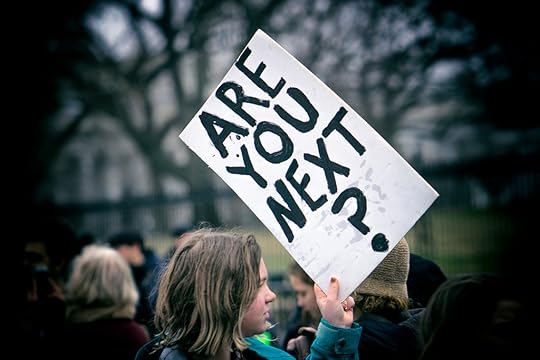
Guns and Liberty
by Chris Hedges
Odessa Police Chief Michael Gerke had refused to publicly say the name of the gunman during a national televised news conference Sunday, saying he did not want to give the shooter notoriety. He had previously described the gunman as a white male in his 30s, and authorities told reporters that the shooter had a criminal record but did not go into detail
The gunman acted alone and federal investigators believe the shooter had no ties to any domestic or international terrorism group, FBI special agent Christopher Combs said. Authorities said those killed were between the ages of 15 and 57 years old but did not immediately provide a list of names. The injured included three law enforcement officers.
Gerke said there were still no answers as to the shooter’s motives. The shooting began Saturday afternoon with an interstate traffic stop where gunfire was exchanged with police, setting off a chaotic rampage during which the suspect hijacked a mail carrier truck and fired at random as he drove in the area of Odessa and Midland, two cities in the heart of Texas oil country more than 300 miles (483 kilometers) west of Dallas.
Combs said the gunman might have entered the Odessa movie theater where the chase ended if police had not taken him down.
“In the midst of a man driving down the highway shooting at people, local law enforcement and state troopers pursued him and stopped him from possibly going into a crowded movie theater and having another event of mass violence,” Combs said.
The shooting came at the end of an already violent month in Texas, where on Aug. 3 a gunman in the border city of El Paso killed 22 people at a Walmart. Sitting beside authorities in Odessa, Republican Gov. Greg Abbott ticked off a list of mass shootings that have now killed nearly 70 since 2016 in his state alone.
“I have been to too many of these events,” Abbott said. “Too many Texans are in mourning. Too many Texans have lost their lives. The status quo in Texas is unacceptable, and action is needed.”
But Abbott remains noncommittal about imposing any new gun laws in Texas at a time when Democrats and gun-control groups are demanding restrictions. And even as Abbott spoke, a number of looser gun laws that he signed this year took effect on the first day of September, including one that would arm more teachers in Texas schools.
The terrifying chain of events began when Texas state troopers tried pulling over a gold car mid-Saturday afternoon on Interstate 20 for failing to signal a left turn, Texas Department of Public Safety spokeswoman Katherine Cesinger said. Before the vehicle came to a complete stop, the driver “pointed a rifle toward the rear window of his car and fired several shots” toward the patrol car stopping him. The gunshots struck one of two troopers inside the patrol car, Cesinger said, after which the gunman fled and continued shooting.
Two other police officers were shot before the suspect was killed. Authorities say the trooper was in serious but stable condition on Saturday, and the other officers were stable.
Witnesses described gunfire near shopping plazas and in busy intersections
Dr. Nathaniel Ott was working at an Odessa emergency care center where he is the medical director when he gunshots. He rushed outside to find a woman in the driver’s seat of an SUV bleeding from a gunshot wound in the arm. Ott said that as he and a paramedic were working on the woman, the shooter drove back by, followed by police.
“The shooter drove within 30 feet of us and drove up that road,” Ott said Sunday, pointing to one of the streets leading past the shopping center where his facility is located. “The shooter was driving. It was insane. He was just everywhere.”
He said the woman was taken to a hospital and he doesn’t know how she’s doing.
Daniel Munoz, 28, of Odessa, was driving Saturday afternoon to meet a friend at a bar but first had to stop for gas. Once his tank was full, he returned to the road but had to yield to traffic coming off Interstate 20. As a car approached slowly, he immediately noticed what he feared to be the barrel of a rifle in the hands of the driver.
“This is my street instincts: When a car is approaching you and you see a gun of any type, just get down,” said Munoz, who moved from San Diego about a year ago to work in oil country. “Luckily I got down. … Sure enough, I hear the shots go off. He let off at least three shots on me.”
Saturday’s shooting brings the number of mass killings in the U.S. so far this year to 25, matching the number in all of 2018, according to The AP/USATODAY/Northeastern University mass murder database. The number of people killed this year has already reached 142, surpassing the 140 people who were killed of all last year. The database tracks homicides where four or more people are killed, not including the offender.
President Donald Trump has offered contradictory messages in reacting to recent mass shootings. Days after the El Paso shooting, he said he was eager to implement “very meaningful background checks” on guns and told reporters there was “tremendous support” for action. He later backed away, saying the current system of background checks was “very, very strong.”
On Sunday, Trump reiterated his more recent calls for greater attention to mental health. Trump has said new facilities are needed for the mentally ill to reduce mass shootings. However, some mental health professionals say such thinking is outdated, that linking mental illness to violence is wrong, and that the impact of more treatment would be helpful overall but would have a minor impact on gun violence.
___
Weber reported from Austin. Associated Press journalists Jeff Karoub in Detroit; Eric Tucker, Michael Balsamo and Meghan Hoyer in Washington; and Tim Talley in Oklahoma City contributed to this report.

5 Dead, 21 Wounded in West Texas Shooting
ODESSA, Texas (AP)—The Latest on a mass shooting in West Texas (all times local):
6:10 p.m.
Odessa Police Chief Michael Gerke says at least 21 people have been injured by gunfire and five killed in a shooting in West Texas.
At a news conference Saturday, Gerke also says that at least three law enforcement officers were among those shot.
He spoke after a chaotic afternoon during which police reported that a suspect hijacked a U.S. Postal Service vehicle and began firing at random in the area of Odessa and Midland, hitting multiple people. Police initially reported that there could be more than one shooter, but Gerke says authorities now believe it was one shooter.
Gerke says he believes the threat is over but authorities remain vigilant.
___
5:30 p.m.
Police said there are “multiple gunshot victims” in West Texas after reports of two suspects opening fire on Saturday in the area of Midland and Odessa.
Midland police said at least one suspect was shot and killed near the Cinergy movie theater in Odessa.
One or possibly two suspects hijacked a U.S. Postal Service vehicle and were firing at random, hitting multiple people, Odessa police said.
“At this time there are multiple gunshot victims,” Odessa police said in a posting on Facebook.
The Texas Department of Public Safety has urged residents to avoid major highways in the area, including Interstate 20.
No other details were immediately available.
Odessa is about 20 miles (32 kilometers) southwest of Midland. Both are more than 300 miles (483 kilometers) west of Dallas.

Hong Kong Police Storm Subway With Batons as Protests Rage
HONG KONG—Protesters in Hong Kong threw gasoline bombs at government headquarters and set fires in the streets on Saturday, while police stormed a subway car and hit passengers with batons and pepper spray in scenes that seem certain to inflame tensions further in a city riven by nearly three months of pro-democracy demonstrations.
Police had denied permission for a march to mark the fifth anniversary of a decision by China against fully democratic elections in Hong Kong, but protesters took to the streets anyway, as they have all summer. They provoked and obstructed the police repeatedly but generally retreated once riot officers moved in, avoiding some of the direct clashes that characterized earlier protests.
Related Articles
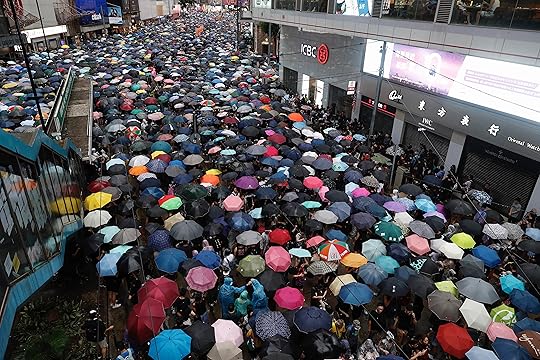
What Do the Hong Kong Protesters Want?
by
Late at night, though, video from Hong Kong broadcaster TVB showed police using batons while on the platform of Prince Edward subway station and swinging batons at passengers who backed into one end of a train car behind umbrellas. The video also shows pepper spray being shot through an open door at a group seated on the floor while one man holds up his hands.
It wasn’t clear if all the passengers were protesters. Police said they entered the station to arrest offenders after protesters assaulted others and damaged property inside. The TVB video was widely shared on social media as another example of police brutality during the protests. Angry crowds gathered outside Prince Edward and nearby Mongkok station, where police said they made arrests after protesters vandalized the customer service center and damaged ticket machines.
Protests erupted in early June in Hong Kong, a semiautonomous Chinese territory of 7.4 million people. A now-shelved extradition bill brought to the fore simmering concerns about what many in the city see as an erosion of the rights and freedoms that residents are supposed to have under a “one country, two systems” framework.
The mostly young, black-shirted protesters took over roads and major intersections in shopping districts on Saturday as they rallied and marched with no obvious destination in mind.
Authorities closed streets and a subway stop near the Chinese government office and parked water cannon trucks and erected additional barriers nearby, fearing protesters might target the building. The office would have been the endpoint of the march that police did not allow.
Instead, a group of hard-line protesters decided to take on police guarding government headquarters from behind large barriers that ring the building to keep demonstrators at bay.
While others marched back and forth nearby, a large crowd wearing helmets and gas masks gathered outside. They pointed laser beams at the officers’ heads and threw objects over the barriers and at them. Police responded with tear gas, and protesters threw gasoline bombs into the compound.
Then came the blue water. A water cannon truck fired regular water, followed by repeated bursts of colored water, staining protesters and nearby journalists and leaving blue puddles in the street.
The standoff continued for some time, but protesters started moving back as word spread that police were headed in their direction. A few front-line protesters hurled gasoline bombs at the officers in formation, but there were no major clashes as police cleared the area.
Protesters regrouped and blocked a major commercial street by piling up barricades and setting a large fire. Smoke billowed into the air as hundreds of protesters waited on the other side of the makeshift barrier, many pointing laser beams that streaked the night sky above them.
Firefighters made their way into the congested area on foot to put out the fire. Police in riot gear removed the barricades and moved in quickly. They could be seen detaining a few protesters, but by then, most had already left.
As police advanced east down Hennessey Road, protesters made another stand in the Causeway Bay shopping district. They threw gasoline bombs at police, who fired tear gas and water cannons.
Protesters built another fire, a smaller one, in front of Sogo department store. Police waited behind their riot shields while firefighters put out the smoldering fire with extinguishers. When police moved in, the protesters had again retreated.
Other groups crossed Hong Kong’s harbor to the Tsim Sha Tsui district, where police said they set fires and threw gasoline bombs on Nathan Road.
Democratic Party lawmaker Lam Cheuk-ting said Hong Kong citizens would keep fighting for their rights and freedoms despite the arrests of several prominent activists and lawmakers in the past two days, including activist Joshua Wong.
Protesters are demanding the full withdrawal of the extradition bill — which would have allowed Hong Kong residents to be sent to mainland China to stand trial — as well as democratic elections and an investigation into alleged police brutality in past battles with hard-line demonstrators.
“I do believe the government deliberately arrested several leaders of the democratic camp to try to threaten Hong Kong people not to come out to fight against the evil law,” Lam said at what was advertised as a Christian march earlier Saturday.
About 1,000 people marched to a Methodist church and police headquarters. They alternated between singing hymns and chanting slogans of the pro-democracy movement. An online flyer for the demonstration called it a “prayer for sinners” and featured images of a Christian cross and embattled Hong Kong leader Carrie Lam, who had proposed the extradition bill.
The Civil Human Rights Front, the organizer of pro-democracy marches that have drawn upward of a million people this summer, canceled its march after failing to win police approval. Police said that while previous marches have started peacefully, they have increasingly degenerated into violence in the end.
The standing committee of China’s legislature ruled on Aug. 31, 2014, that Hong Kong residents could elect their leader directly, but that the candidates would have to be approved by a nominating committee.
The decision failed to satisfy democracy advocates in Hong Kong and led to the 79-day long Occupy Central protests that fall, in which demonstrators camped out on major streets in the financial district and other parts of the city.
The participants in the religious march Saturday were peaceful and mostly older than the younger protesters who have led this summer’s movement and, in some cases, blocked streets and battled police with bricks, sticks and gasoline bombs
Religious meetings do not require police approval, though authorities said late Friday that organizers of a procession with more than 30 people must notify police.
___
Associated Press videojournalists Alice Fung and Johnson Lai contributed to this report.

Chris Hedges's Blog
- Chris Hedges's profile
- 1922 followers



